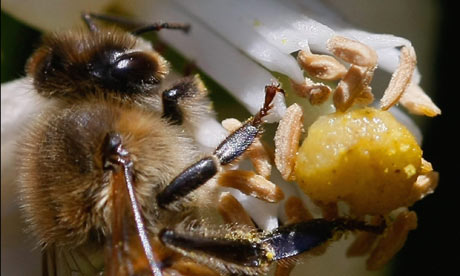Yep.
Lemme see. Gas is 3 bucks a gallon here as of today.
Fruits and vegetables that are pollinated by bees will be fwe and far between, and expensive.
Economy is gonna tank in a year or so if this keeps up.
Chinese wll attack us.
Al Qaeda will nuke us.
We're gonna have to fend off a Mexican/South/Central American invasion.... simply because they will all come here.
The shit might hit the fan in a different way than I expected




 Reply With Quote
Reply With Quote




 A honeybee pollinates a flower in a citrus grove just coming into blossom. Photograph: David Silverman/Getty Images
A honeybee pollinates a flower in a citrus grove just coming into blossom. Photograph: David Silverman/Getty Images

Bookmarks